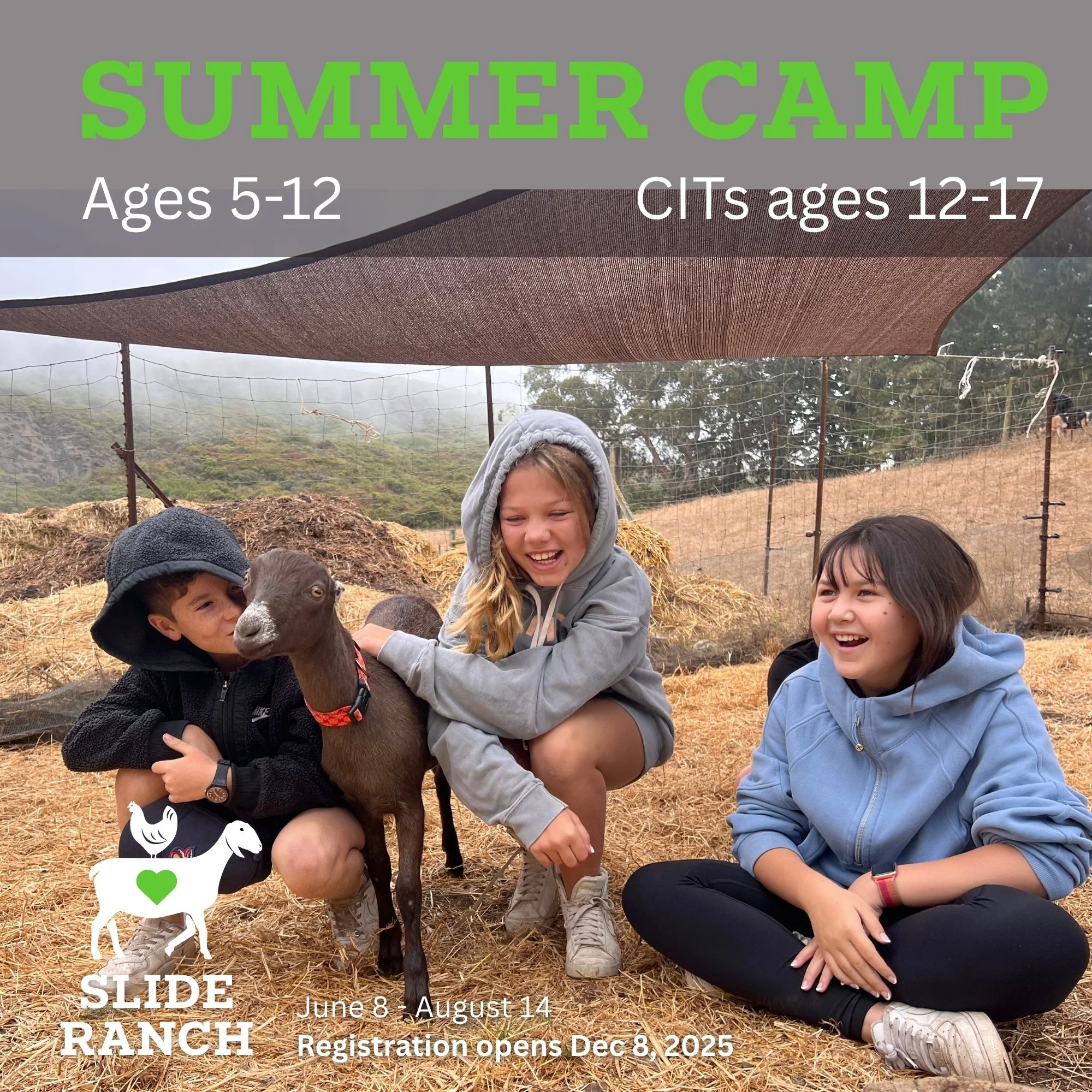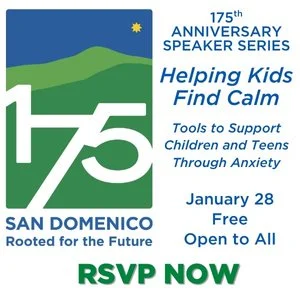Q&A With Linda Burch, Chief Education and Strategy Officer of Common Sense Media
/* Ronnie's Awesome List is excited to give away 1 ticket to see Jim Steyer at the next Speak to Me event. The winning name will be drawn from my subscribers on Monday. Good Luck!
Linda Burch is the Chief Education and Strategy Officer of Common Sense Media, a non-profit dedicated to helping kids thrive in a world of media and technology. Her colleague, Jim Steyer, CEO and Founder of Common Sense Media, is the guest speaker at the next Speak to Me event on March 31st. Tickets are on sale now. I am excited to share an exclusive interview with Linda Burch.
"Digital Generation: How Technology is Shaping Our Youth.” That’s a very robust topic. Do you know what Jim plans to focus his talk on?
He’ll give a brief history from past to present and discuss the big opportunities and challenges of raising kids in a digitally rich world. In 2003, when we founded Common Sense, there was no Facebook, no Youtube, the iPod was a year old, and Google was not yet a verb. In schools, we were talking primarily to middle school parents about the media’s effect on kids’ development; now it’s preschoolers and younger. The impact on media has a dramatic and profound effect on our children. As a parent and educator, Jim, will shape his discussion from both perspectives and talk about how our kids are growing up in a very different world than the one we knew.
At a Speak to Me event a couple of years ago you said there should be "nutritional labeling on media." How has Common Sense put this nutritional labeling on media?
Common Sense has always believed that there's no one size fits all approach to managing the media and technology in our kids lives because every child and every family is different. We recognized that when parents are given the information that they need about the media and technology their kids use, consume, and ultimately create - they're able to make the best decisions to suit their respective values and needs. To that end, we created a unique ratings system that considers age and developmental stages and dives much deeper than broad industry ratings systems, much like a "Consumer Reports" for media.
This is about sanity, not censorship. I do not think the media is that much more violent or crass then it was ten years ago, when Common Sense got started, but there is a lot more unfettered access to inappropriate content, even for our youngest kids. Our ratings and reviews provide valuable information that allow for meaningful family conversations and support critical thinking that empowers kids to navigate this world independently, which really is the ultimate goal.
Besides the website, what other ways do you reach out to parents?
Parents can find reviews on our mobile app, called Kids Media. On that app, parents are able to enter your child’s age and instantly receive recommendations for all kinds of media - movies, TV, apps, games, websites and more. We want to provide information to parents whenever and wherever they are making a media choice for their family. We have become pretty ubiquitous and a trusted resource. With over 3 million unique visitors per month to our website, and our content powering the family media ratings on Netflix, Comcast and 25 other partner platforms, we’ve become the gold standard of family media ratings.
What's new at Common Sense?
Our newest program incorporates family ratings into what we call "learning ratings". Not only are we rating and reviewing for age appropriateness but also for educational value. We’re helping parents discover great apps, games and websites specifically for learning. That covers not just the usual academics but social-emotional learning too. And because kids today are not just consumers but also creators of media, we help parents find great digital tools that help kids learn how to code, make videos, share music and do mash-ups.
Media is a prominent part of schools. What is Common Sense doing in schools?
We have program called Common Sense Education that launched in 2007. At that time, we were going into schools to give talks to parents about the media’s impact on kids development. Schools and teachers embraced our positive message about digital media because we didn't focus just on the pitfalls but also on the possibilities.
Working with schools is an amazing opportunity to engage teachers, administrators, as well as students and parents in important conversations about the challenges and opportunities of growing up in a digital world. Schools are often where the problematic issues surface and that’s why we take a whole community approach. We created a resource and a membership model where teachers can access free K-12 curriculum, scripts, videos and discussion guides around media & technology and kids. In our first year, we hoped that maybe 500 member schools would sign up, but in the first year we had 5000. Clearly, this showed there was a huge need. Fast forward to today, we now have a K-12 digital literacy and citizenship curriculum that teaches kids how to navigate the online world safely and responsibly. We are in 89,000 schools across the country (that’s 65% of the schools in the U.S. using our curriculum.)
The second thing we are doing is a program called Common Sense Graphite. One of the big challenges for schools and teachers is how to identify quality content to use in the classroom. Bill Gates and bgC3, his philanthropy investment organization, backed this project through to create a "consumer reports style guide” to educational technology for teachers. Now Common Sense is in the K-12 education space helping schools, districts and teachers harness the power of technology for learning in two ways - by providing a digital citizenship curriculum that gives the behavioral life skill to use technology wisely and the Graphite platform that helps teachers select great digital content to propel student learning.
What changes in culture have you seen from the time you started at Common Sense?
Media and technology run through the middle of kids lives. The trend is on mobility, wearability, the convergence of content being displayed on every device imaginable. It’s omni-present and almost invisible, therefore, we need to force ourselves to reflect on our personal relationships with each other and how we are balancing technology in our lives. There is a great book by Sherry Turkle called 'Alone Together: Why We Expect More from Technology and Less from Each Other.’ It's about how the need to be constantly connected is changing the nature of our relationships. What happens when we’re looking down at devices rather then looking across at each other? To me, that's the more insidious piece. Kids don't know how to have a conversation, they don’t make eye contact, and that’s how relations are built . If they’re not doing that something is being effected. Before this technology boom, kids have always had to create entertainment for themselves. Now they quickly go to technology to fill that void. Parents are less fearful about technology than they were 10 years ago but there’s a growing uneasiness that we are conducting the greatest experiment on our children in real time and we don’t yet know the outcome.
Something else that has changed is how kids learn. When I look at my own kids, a daughter in college and son in high school, the differences in the way they learn are dramatic. My son is a self directed learner because of the access he has to online learning. If my daughter said when she was young, "I would like to learn how to play the ukulele," I would try to find a teacher and wonder how I was going to fit that into her schedule. If my son says he’d like to learn to play, he would instantly go on Youtube, find a teacher and be playing chords in a few hours. That’s a real change in the culture and how kids can be empowered by media and technology.
I interviewed Dr. Scott Sampson, who said kids are consumed by media 7-10 hours a day and very little time in nature. He calls this disconnect between people and nature one of the major crises of our time.
I agree. It’s really important to get out into nature and it works. If you’re taking a hike and you don’t have a cell phone with you, even if you’re walking silently next to one another, you are communicating and there’s so much room for good conversation. Nature is the way I have created the most balance with my kids. We are so lucky to able to do that in the Bay Area.
Technology isn’t going away and changes at such a rapid pace. How can parents gain the understanding, skills and confidence to help young people grow and thrive in the new media culture?
The way that parents have to keep pace is to do their homework and know what is going on in their kids lives, especially where technology exists. But you can never be an expert in everything. It’s important to know your child, what are they interested in, and what are they picking up. CSM has the tools and resources you need with ratings, reviews and parent advice to make an informed decision on the media your child consumes while keeping parents as close to being on the technology curve as possible.
What is the biggest advocacy push in media consumption for kids happening now?
We have two policy priorities that we think are really important. One is around privacy and making sure that states and governments are thinking about how children’s data is protected, how they own it, how to erase it over time, and ensure it cannot be sold to a 3rd party without parental knowledge. This whole arena of protecting kids privacy around their personal data is a cutting issue.
The second area we focus on is how closely technology is linked towards learning. We want to make sure all kids in the U.S. have access to the benefits technology can bring. That means pushing for funding at the FCC level to allow every school and library to be wired with access to media rich learning. Other area we look at are the negative effects on kids health from obesity to media violence. We also look at the way that net neutrality has an impact on kids. It’s a lot about the media and technology infrastructure and how the data gets managed. Jim will speak to that.
Social media doesn't protect privacy, despite the antiquated Children's Online Privacy Protection Act (COPPA) law from 1998, we know kids are lying about their age and using social media under 13. Are current laws of privacy being proposed to reflect the technology we have today? What privacy provision do you think should be included in the law?
There is a law in California that we helped shape called “The Eraser Button Law." It became law this January, allowing kids aged 18 and under the rights to erase information they have posted about themselves online. They have the right to own their own data. Common Sense is helping other states enact this important law across the country.
Privacy of kids in school is a new area and the laws have not been rewritten for a long time to reflect technology in the classroom. FERPA - the Family Educational Rights and Privacy Act is a federal law that is designed to protect the personally identifiable information on students, and guides what schools can and can't do with data created in schools. Every time a student uses an app, game or website, (or if a school stores student information in the cloud), that data, which sometimes contains sensitive information, is at risk from being collected by or shared with third party companies who may use that data to create profiles of children that will follow them throughout and after their school careers. Common Sense is working on ways to protect students' information so that it remains out of the hands of companies that might take advantage of it. We are also working on ways to make privacy policies more transparent and understandable to parents. How many times have you read the privacy policy and then clicked the button to subscribe?
You are not going to change the types of video games or movies produced but if you can re-write the laws that govern media; what would you change?
I will leave that to Jim in follow up.
If you could turn back the clock, what would you want to have changed to avoid the downside of technology?
I would like to have seen digital citizenship taught in every school in the country and families of young children talking together about how to establish a healthy media diet. My biggest concern today is about how technology is changing the nature of our relationships. It's hard to have an intimate conversation when you’re looking down at a device rather than at someone’s face. We are coming out in October with a study of media use among kids 8-18 year olds. This will be big news because it is the first time in five years someone is taking a critical look at our kids' media habits covering this age group and that should reveal a lot that will address this.
What rules & devices do you have set for your kids?
My main rule is devices are turned off over night and are not next to the bed. I don’t want my kids to be tethered to their phones. I do have to set time and content limits. Absolutely no first person shooter games. This was not without pain. Some of my son’s friends played Call of Duty while my son played a game called Journey. My other rule is one of transparency. I am friends with my kids on Facebook and I when they were younger I would occasionally ask to check their cell phones.
You can learn more about Common Sense Media at the next Speak to Me event on March 31st with Jim Steyer CEO and Founder of Common Sense Media. To purchase tickets go to Speak to Me. For more information about Common Sense Media visit them at commonsensemedia.org, or on Facebook and Twitter @CommonSense.













